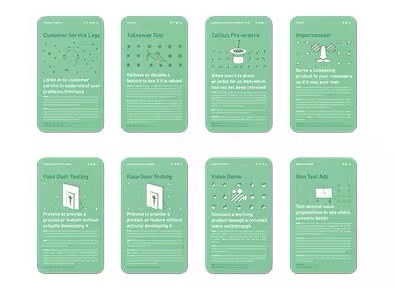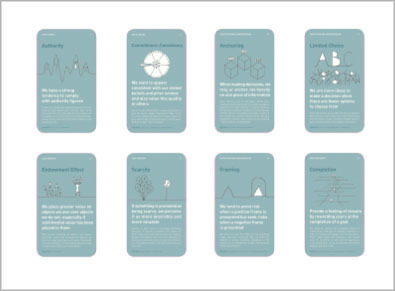I recently met Pamela Pavliscak at the Push Conference in Munich, Germany, where I, as Pamela, had the fortunate chance of speaking.
Pamela is in a fascinating pursuit of figuring out the underlying formular of online happiness. It was hooked.
Through an elaborate online study of 8000 people on 300 sites, collecting 1000 diaries, interviewing 500, and socially listening to 50 brands, Pamela Pavliscak dug deep down into how and when we experience happiness when we are online.
She found that we tend to return to those sites we associate with happiness and also recommend them to others. She explained how happiness makes us feel connected, in control, entertained, challenged, informed, smart, inspired, and creative1.
She describes 5 aspects of an experience we must consider as designers to help us create happy user experiences for our users:
- Ease. Easy is the starting point – without easy, there is no happy. Allows users to feel a sense of autonomy, control, and mastery.
- Trust. Trust is more than privacy and security settings. Trust is especially required with wearable devices as they become part of you. Authenticity, respect, and care are keywords for building trust.
- Creativity. The more emotions people associate with an experience, the happier they will be. Design for play, discovery, serendipity, and maker moments.
- Connection. Creating connections is not just about the number of the likes – it’s the meaning of likes. Let users feel a sense of belonging – of being like-minded and having a presence in the community.
- Meaning & Growth. Combine pleasure and purpose to help people be more awesome at what they do. Design for the continued knowledge over time – for learning experiences.
After her talk, I had a chance to find out more. I asked Pamela a series of questions about her long and fascinating quest to figure out online happiness. You are in for a treat.
About Pamela Pavliscak
Pamela has spent the last 15 years of her life having conversations with people about technology. Not experts, not developers, not designers, not celebrities. People like you and me, who are living their lives, and trying to sort out how technology fits in when everything keeps changing.
Pamela collect stories about how people engage with technology. Her work is part ethnography, part data science, part behavioral psychology. Right now, that’s usually called UX.
When she is not running her company, Change Sciences, she has a busy schedule writing and speaking about people and technology.

Pamela Pavliscak
It seems as if you are on a mission of making the web a happier place. How did this come about?
Pamela: Every day it seems like there is new research cropping up about how technology is making us miserable. Physically, we are stooped, our eyesight is fading, our sleep is disrupted. Emotionally, we are starting to seem like a bunch of disconnected, distracted, narcissistic shallow thinkers. That’s not what I signed up for.
Like most people working in technology, I’m optimistic about it. I really believe that technology can make us and our world a better place.
With some interest, I’d been following the new thinking around happiness. It’s not just smiles and cupcakes and lolcats. It’s a combination of small pleasures and higher purpose. That led me to look at the case for happiness in other spheres. Companies are starting to care about employee happiness. Countries are tracking national happiness as a counterpoint to the GDP. Big thinkers in behavioral economics are coming to the conclusion that money doesn’t mean happiness.
Right now, our design goals are conversion, which is money, and attention, which is also money. What if our goals went beyond that? A lot of people may think that is crazy, I suppose. But what if we started to care about the whole person at the other side of the screen or the device? Our practice is already grounded in empathy, but can we break down what that really means and make it a measurable goal?
Every day it seems like there is new research cropping up about how technology is making us miserable.
You set up a quite elaborate research study to discover what experiences bring us the most joy. Can you briefly explain your setup?
Pamela: I knew that if it was possible to research all the negatives, it must be possible to research the positives. I also knew as a researcher that it would be difficult to get at emotions, especially positive emotions, since people tend to have a negative bias when they remember their technology experiences. When technology is working well, it is invisible, or a means to an end.
Working in design, we actually share this bias. We work with more of a disease model. We take a “sick” interface, diagnose the problems through observation or data collection or discussion, prescribe solutions, and then, maybe if we have time, give out a lollipop at the end in the form of a cute mascot or a cheeky error message.
Even though I followed the lead of happiness researchers in other fields, looking to global happiness and happiness at work for study design and looking to data science for tracking tools and algortihms and looking to positive psychology for models, I had to get creative. I started out with an online study, partly to try out an in-house tool we were developing at Change Sciences. Like most research, that opened up new questions. So I followed up with diaries, interviews, and social listening to get at what happiness really means when it comes to technology.
In short, happiness is about amplifying human abilities, fostering new and deep connections, and challenging ourselves to grow.
What was your main finding?
Pamela: Truly, our happiness online in many ways mirrors our happiness offline. It’s built on feelings of trust and autonomy. We want deeper and more nuanced connections to each other, our communities, and the the world. We want to challenge ourselves to grow in new ways. And we want to feel creative. I think this is a special feature of tech happiness. I wonder if technology doesn’t feel intrinsically creative because if nothing else, it is always the new next thing.
In short, happiness is about amplifying human abilities, fostering new and deep connections, and challenging ourselves to grow. The best experience with technology open up these possibilities.


